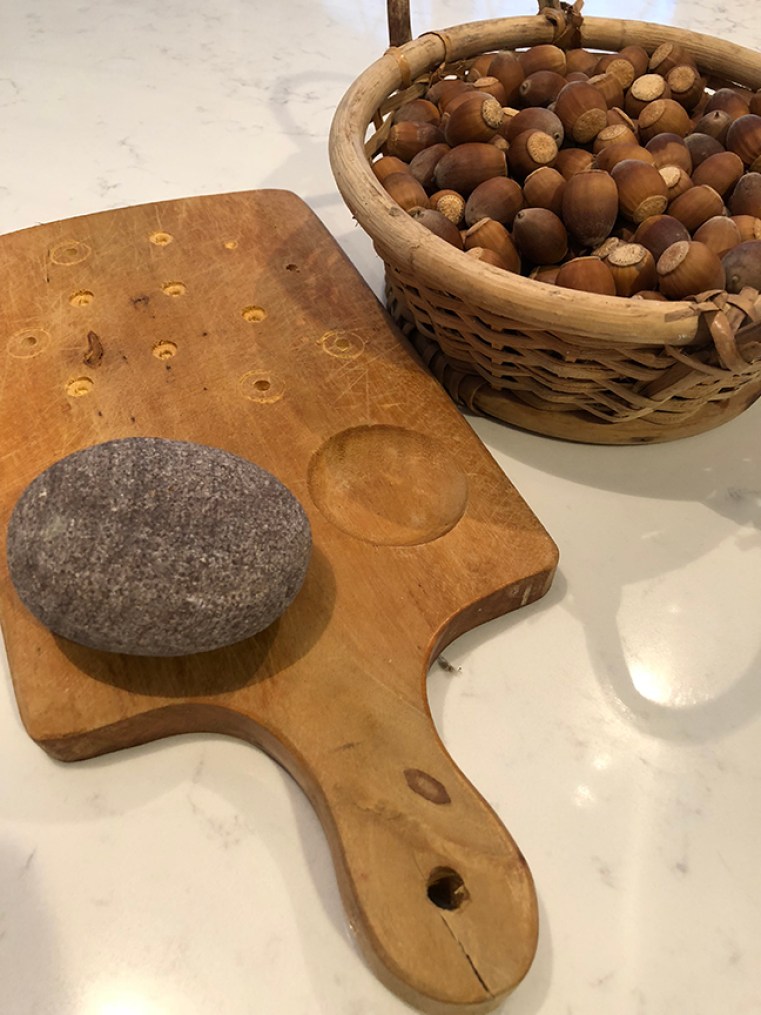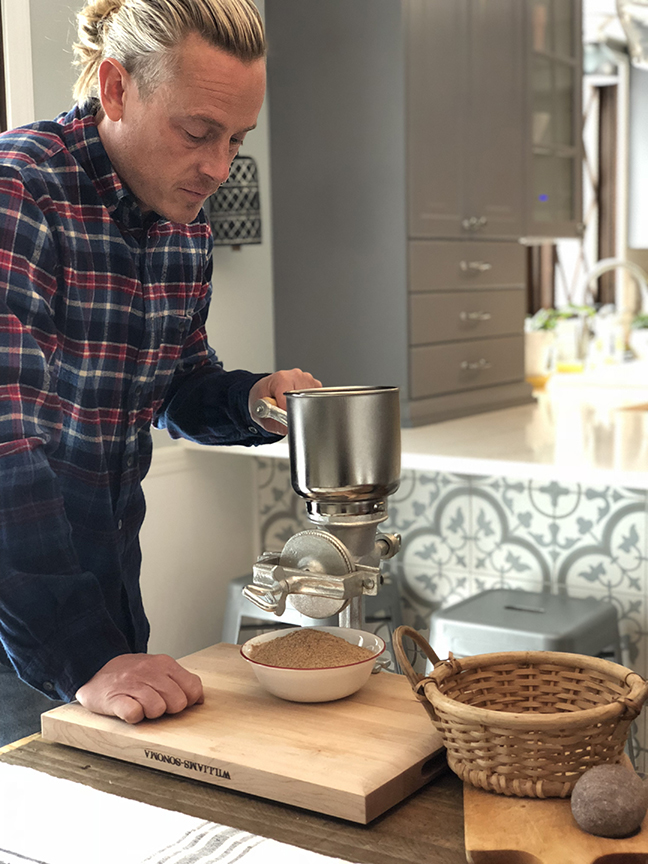How to Identify, Process, Prepare, and EAT Acorns!

You may have heard the myth that acorns are poisonous and should be avoided. I heard this a lot when I was growing up. This is one of the greatest falsehoods that exists in the world of wild edibles. Though acorns contain tannins–an acidic organic substance (they are a class of astringent) that can make one sick to their stomach if too much is consumed–through a specific process of harvesting, preparing, grinding and leeching out tannins, acorns become a nutrient-dense survival food! In fact, during a discussion about eating acorns with an Ethnobotanist/Anthropologist friend of mine, he indicated that some research and evidence suggests that more acorns have been consumed throughout human history than wheat, rice, and corn combined. This idea blew my mind!

WHAT IS AN ACORN
Simply put, an acorn is the seed of the Oak Tree. Just as there are many varieties of Oak Trees, there are numerous types of acorns–all unique and varying in shape, size, and taste. Consumed in great quantities by indigenous cultures throughout North America, the acorn was eaten as a boiled gruel, a thickening agent for soups and stews, and was ground up to be utilized as flour for breads and other baked goods. The acorn was and is a versatile survival food. In the past, it sustained entire cultures because of its availability and long shelf-life (if properly dehydrated and stored).
HARVESTING ACORNS
Acorns ripen in late summer/early fall and drop to the ground to germinate. This typically happens in two phases, what I call the “light drop” and the “heavy drop.” Acorns gathered during the “heavy drop” phase tend to be best for consumption and storage. Even so, great care still has to be taken to separate good acorns from bad acorns. There are a few telltale signs that make this separation process easy, one of which is consistent coloring throughout the body of the acorn.
After harvest, acorns should be washed thoroughly. At this time, the acorns can be prepared immediately or dried and stored for future use. The drying process has to be done correctly, as acorns are highly susceptible to mold. If they mold, you shouldn’t consume them. Mold tends to ruin the whole batch, too. Most indigenous cultures dried their acorns in the shell and stored them for later use. I tend to dry my acorns for a full month before storing them. I also use a labeling system to help me manage them throughout the drying process.

Take the Online Course!
SHELLING
No matter what, shelling washed and dried acorns is a labor intensive process. But the payoff–being self-sufficient by creating delicious food from nature for FREE–is absolutely worth it! I go primitive with my shelling process, using a rock to crack the shells and extract the acorn nut meat. I even have a cutting board I’ve modified to make the process easier.


GRINDING
After your dried acorns have been shelled, it’s time to grind them into meal or flour. I use a manual, hand-crank grinder for this. Not only does it feel “old-fashioned,” but it will come in handy if the grid were to ever go down and my electric appliances become useless.


COLD-WATER LEACHING
While the tannins can be leached through boiling, I’ve never been a fan if it. I prefer the passive and traditional method of cold-water leaching. It’s not a fast process, but it is easy. In fact, the squirrels in my yard prefer cold leaching as well. Every fall, I watch as they bury bitter Red Oak acorns in the ground to uncover weeks or even months later after the rain, snow and ground water has (at least I assume) leached them to a more palatable level. While acorns can be soaked in a creek or stream to remove tannins in the wild, I typically use large Ball jars for all my cold-water leaching at home.
The leaching process involves soaking the acorn meal in several changes of water. With each change of water, more of the tannins, providing the bitter, astringent taste to the meal, will be removed, making the end result a tasty meal that should be thoroughly dried before using as flour.
When it comes to how and when to change the water during the leaching process–it can vary. At the end of this post, I have included some resources to help you with this.


USING ACORN FLOUR
Acorns contain valuable oils, proteins, vitamins, and minerals. They really are one of natures most underappreciated super-foods. Acorn meal doesn’t have the binding properties of wheat flower, so baked goods using it aren’t as doughy as you might be used to. Don’t let this dissuade you from using it. It can be substituted in equal quantity for any recipe that asks for wheat flour. Or, as is oftentimes done, it can be substituted 50/50 with wheat flour as well.
Acorn meal was not only used by indigenous cultures in breads and ash cakes, but it was also used to make a nutritious porridge-like gruel. This primitive gruel was/is similar modern day oat meal. The coarsely ground meal was boiled in water and mixed with other seeds, nuts, and even berries. Eaten this way, it has a very singular flavor, with specific nutty tones, and is much more palatable when sweetened with honey or maple syrup.











3 Comments